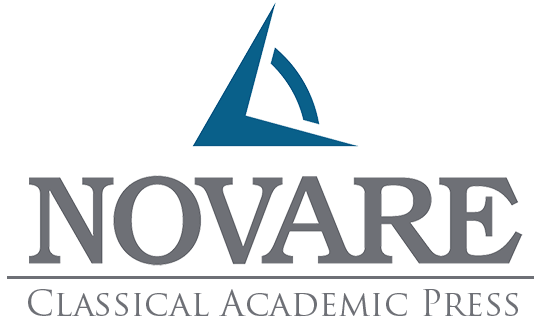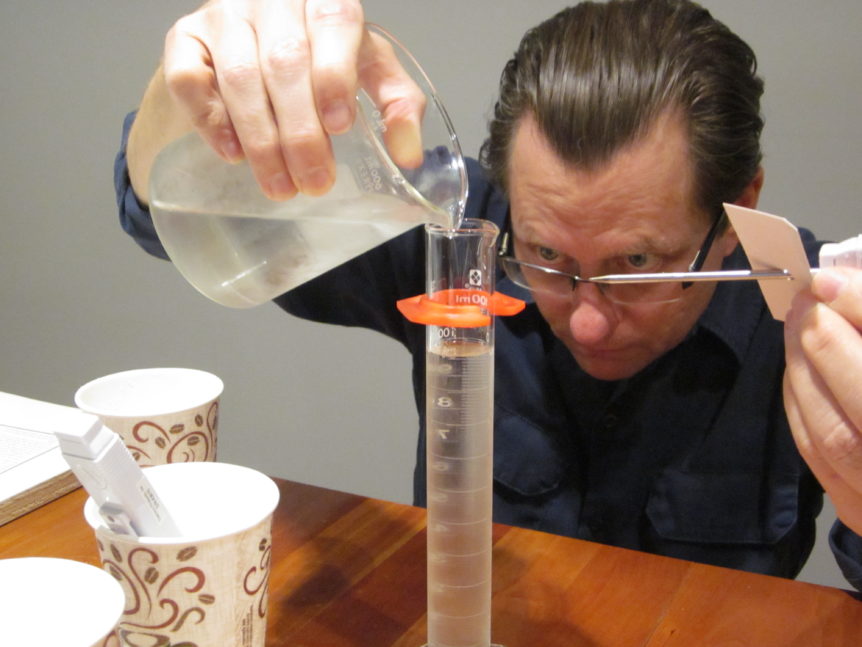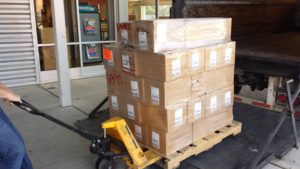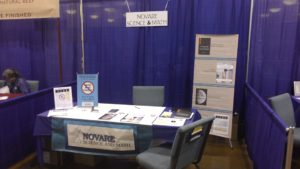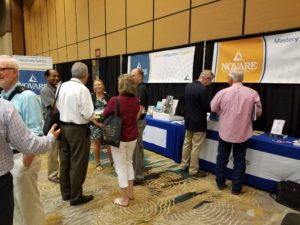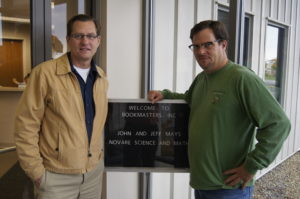[In celebration of our 10 Year Anniversary, John reflects back on the events that made Novare Science & Math a reality.]
No one can possibly be more amazed than I am at where the Lord has brought us over the past 10 years. Ten years ago, the last things on my mind were starting a new business, retiring from teaching, and writing textbooks! This milestone seems a good time to recount how it all began.
I have to go back to the early 2000s when I was Science Department Chair at Regents School of Austin and spearheading a revolution of what I perceived as the defunct norms of science education. For years, I had been aware that students were plodding through the year, procrastinating on assignments, frantically cramming for tests the night before, and forgetting the current chapter’s concepts just days after the chapter test. I agonized over the fact that students were not retaining what they were learning in class. Were we all just wasting our time?
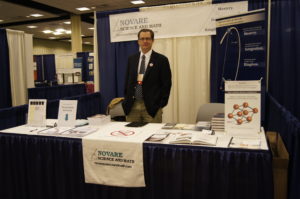
I started calling it the “cram, pass, forget” cycle, a phrase which resonated with my students. One of them even had a little sticker printed up with a red “X” and stripe through those three capitalized words, and he gave it to me as a kind of joke, a token of our unique classroom culture. It was later turned into the familiar red circle with a stripe through it. I stuck it on the back window of my truck, and from then on everyone could instantly identify Mr. Mays’ truck.
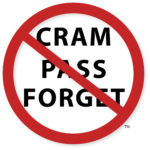
I will refrain from going into too much detail here but suffice it to say that in those early years I worked with my science department colleagues to design and implement a new “mastery-based” teaching and learning paradigm. Radical changes to our teaching methods and to students’ study methods were in order.
It took years to hone and perfect the new system. The administration was cautiously supportive, but the final result was astounding. There were dramatic, unimagined improvements not only in the retention of course content but a sense among the students that they for the first time felt that they knew something about science, that science was actually fun, and that hard work and new methods had transformed their whole academic outlook.
In about the spring of 2007, I began work on Teaching Science so that Students Learn Science. I had not been thinking about writing a book, but I was prompted by some things I read in some curriculum documents that indicated a serious lack of understanding of what science was all about and how it worked. The Teaching Science project went on for another two years, and by summer 2009 I had the draft manuscript finished. I submitted it to two different publishers, but it didn’t seem to fit in with anyone’s catalog. I decided to print it myself that autumn under the Novare Science & Math imprint. (Actually, it was spelled with “and” in those days. We adopted the ampersand in 2013 when we became an LLC.) It did not occur to me then that I had just started a publishing company.
Just before this period, I had finalized work on The Student Lab Report Handbook, a document that began as a set of class handouts nearly 10 years earlier and turned out to be my first book to publish. As I started calling around looking for a publisher, one fellow said, “It sounds like you’re the publisher and all you need is a printer!” That was the first of the two Ah-ha! moments in this story. Having been informed that I was a publisher, it was easy enough to call up the shop where I had Teaching Science printed and tell them I had another title to print. So by early 2010, I had two small books ready to sell and our house turned into a warehouse, with stacks of boxes everywhere we could find a place to put them.
That fall, I was ready to start on my next project, which was writing a text for the ninth-grade science class I was teaching, a class I developed and titled “Accelerated Studies in Physics and Chemistry” or ASPC for short. After working on the text until 1:00 a.m. every night, I had a draft of it ready to use in the following year.
I had produced it on my Mac using the Pages word processor and had the copies printed and coil bound at the corner Kinko’s print shop, but by Christmas, I could see that more powerful tools were necessary. Over the Christmas break, I purchased Adobe’s powerful InDesign software, watched about 12 hours of training videos in a day and a half, and set about the task of reproducing The Student Lab Report Handbook as a training exercise in the new software. That took a week, after which I went right on to building the new version of Accelerated Studies in Physics and Chemistry. I printed paperbacks for use in the 2010-11 school year while I was completing the final editing for the first edition, hardcover text.
I found the process exceedingly satisfying and personally rewarding. Public domain graphics and pictures of famous scientists were easy to find, and I started tinkering with Adobe Illustrator to create my own diagrams and images. Somehow, after grading papers for my class and scarfing down a plate of dinner, and taking care of other household duties, I found the energy to compose until 1 or 2 o’clock every night, something I had seldom done even as a college student.
When I first saw the completed product, my heart soared with joy. “Now my students will have the text that goes perfectly with the class,” I thought. The notion that the book would be used by anyone outside of Regents School of Austin was a dream, but not something I expected to go very far. Nevertheless, I put together an exhibitor booth and started going to a couple of education conferences to see if anyone would be interested.
Upon seeing the completed ASPC text, one of my colleagues nonchalantly said that now I needed to write a text for her class—she was teaching physics, another freshman science class I had developed. We both laughed. Clearly, my colleague thought I had too much free time on my hands. But I went to work anyway and by the summer of 2012 the draft of her book, Introductory Physics, was ready.
About this time, I could see that I needed help in a big way. I couldn’t write books and market them at the same time. By 2012, although I still did not know that I was about to spend several years writing physics and chemistry texts, I did see that Novare Science & Math was gaining momentum. So I hired my brother Jeffrey in the spring of 2012 and retired from my full-time teaching position three months later.
The two of us began going to conferences together that summer. I had ideas for three more books—Science for Every Teacher, Favorite Experiments for Physics and Physical Science, and my first middle school book, Novare Physical Science. I wrote and published them all the following year and had them on the vendor tables to sell in 2013!
That was when the next Ah-ha! moment occurred. Teachers who came by and looked at our texts loved them, but said things like, “I teach chemistry—what do you have for me?” I suddenly realized that there was a great need for better science texts in all subjects. I had been focusing on producing books that were aesthetically elegant, easy to read, scientifically sound, and solidly Christian. It turned out that teachers in all the other fields in science wanted the same thing! Who woulda thunk it! I finally saw the light and heard the call. I went straight back home and, by some divine empowerment and motivation, wrote our two chemistry books and had them both in print by the fall of 2014.
We could see where this was all leading: a complete middle and high school curriculum. We rented a warehouse and office space. I wrote Physics: Modeling Nature the next year. Shortly after, the Lord began sending us a steady stream of additional authors: first Kevin Nelstead who wrote Earth Science, then Heather Ayala and Katie Rogstad for General Biology.
Future projects will hopefully include Life Science for middle school and an upper-level elective, Environmental Science in the not-too-distant future. I hired a few more people, including two of my daughters to help with sales, marketing, and editing. Currently, there are three of us in the shop—Jeffrey, Emily Cook, and me. It remains to be seen whether the Lord will bless us to grow further.
Producing beautiful textbooks is one of the most enjoyable things I have ever done. I absolutely love watching a new book come together on the screen right in front of me. Remember Eric Liddell’s famous line in Chariots of Fire? “When I run, I feel His pleasure.” I feel the same way about my work.
Some years ago, my wife commented that it seemed as if the Lord had been preparing me for this work all my life in the particulars of my studies and career. I think she was right. Everything lovely about Novare Science & Math—the books, the teaching, the experiments, and everything else—is from the Lord, Father of it all. Gerard Manley Hopkins expressed it best: “He fathers-forth whose beauty is past change. Praise him.”
